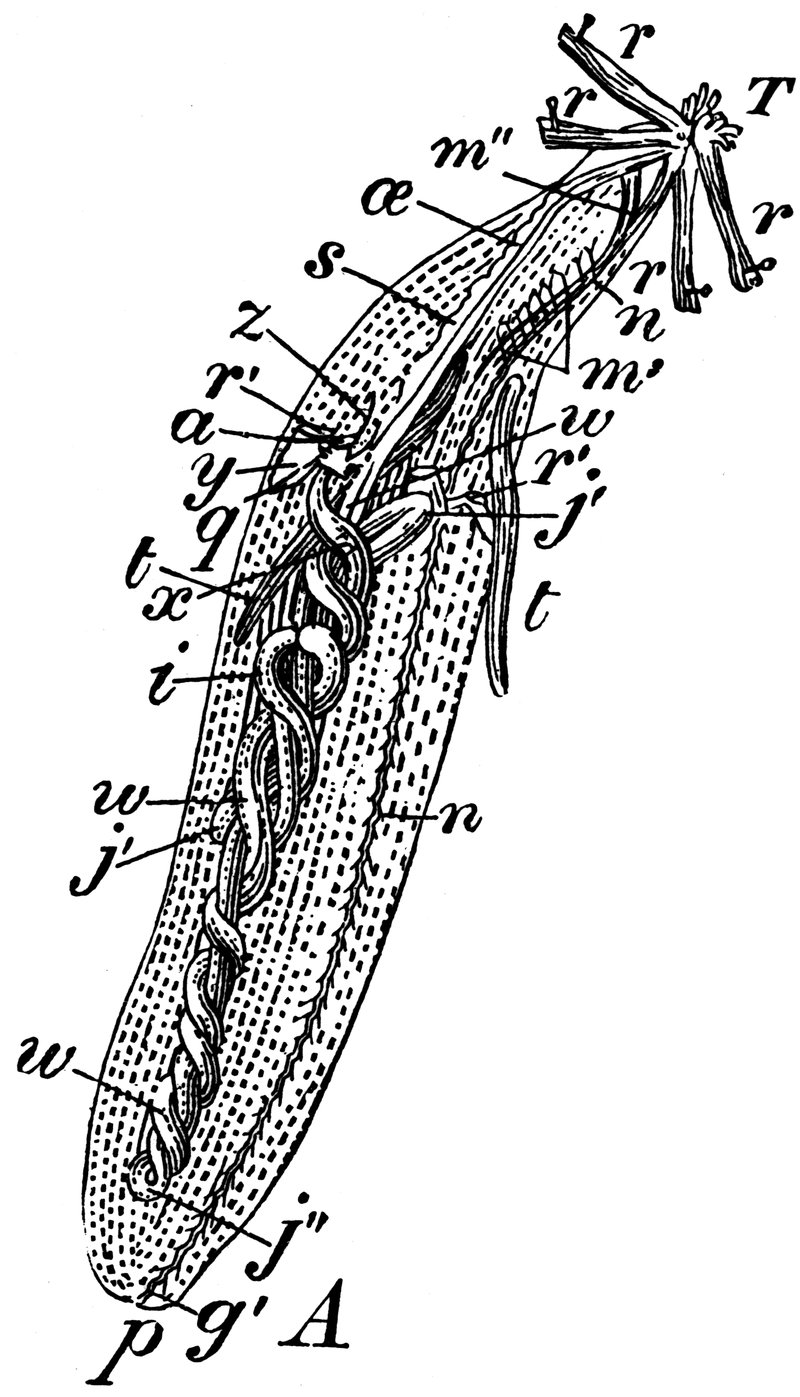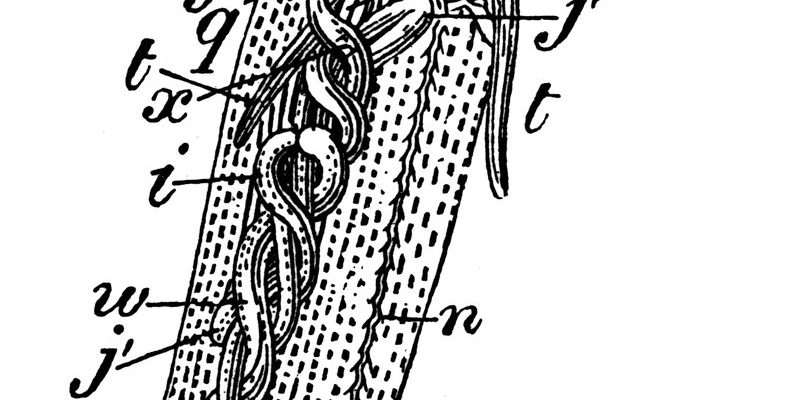
So, let’s dive in! Peanut worms are part of a larger family of creatures called *Sipuncula*, which includes various similar species. They live mostly in sandy and muddy ocean bottoms, where they like to burrow into the sediment for protection. It’s a cozy nook for them, but how do they eat in such a setting? You might be surprised by their clever feeding methods and specialized adaptations that allow them to thrive underwater.
What is a Peanut Worm?
Before we get into the feeding mechanism, let’s take a moment to understand what a peanut worm actually is. Peanut worms are soft-bodied marine invertebrates that can grow from just a few centimeters to over a meter in length, depending on the species. Although they might look like a typical worm, they are distinct in many ways.
These worms possess a tapered body that can be retracted, which is one reason they resemble peanuts—hence their name! They have a wide mouth at the end of their body, surrounded by tentacle-like structures. This is crucial for their feeding strategy, and it’s quite an interesting adaptation. Imagine a creature whose mouth is almost like a vacuum cleaner—ready to suck in food particles floating by.
The most exciting thing about peanut worms is their ability to live in various marine environments, from shallow coastal areas to deeper ocean floors. They play an essential role in the ecosystem, helping to break down organic materials and recycle nutrients.
How Do Peanut Worms Feed?
Peanut worms have an intriguing way of feeding, which involves a combination of both passive and active methods. The main feeding method that defines these creatures is known as suspension feeding. Essentially, they filter tiny bits of food from the water around them, which mainly consists of plankton and detritus.
Once a peanut worm senses food nearby, it employs its tentacle-like structures, called tentacular crowns, to capture these particles. The tentacles are coated with mucus that helps trap food as the worm extends them out. This is a bit like casting a fishing net—you reach out, catch what you can, and then retract your net back in.
After the tentacles capture the food, they’ll pull the particles toward the mouth, where the actual eating occurs. The food particles are then ingested and digested within the worm’s internal organs. Isn’t that fascinating? It’s like the worm has its very own buffet right in its cozy burrow!
The Role of Mucus in Feeding
Now, let’s dive a little deeper into the role of mucus in the feeding process. Mucus is a slimy substance secreted by many animals, and for peanut worms, it serves multiple purposes.
1. Food Capture: As mentioned earlier, the mucus lining the tentacles helps trap food particles. Without this sticky substance, it would be nearly impossible for these worms to catch tiny plankton efficiently.
2. Protection: Mucus layers also provide a protective barrier. In their natural environment, peanut worms are exposed to various dangers, from predators to environmental toxins. Mucus can help shield them from harmful substances while also keeping their body moist.
3. Movement: Mucus can aid in locomotion. The slippery texture helps the worm navigate through sediment and burrow back into the ground quickly, making it harder for predators to catch them.
Mucus is an unsung hero in the feeding mechanism of peanut worms, proving that sometimes the simplest solutions are the most effective!
The Digestive Process
Once food is captured and swallowed, it enters the peanut worm’s digestive tract. Here’s where the magic of digestion happens. Peanut worms have a simple but efficient digestive system that consists of a mouth, a gut, and an anus—just like humans, though much simpler!
1. Ingestion: The captured food particles go in through the mouth and travel down into a sac-like structure called the intestine. This is where the process of breaking down food begins.
2. Digestion: Enzymes in the gut help break down the food into smaller, absorbable nutrients. Peanut worms thrive on a diet rich in organic matter, and their guts can process this efficiently.
3. Absorption: The nutrients from the digested food are then absorbed through the gut wall and into the worm’s body. This is crucial for energy and overall health, especially since peanut worms need energy to maintain their burrows and survive in their environment.
4. Egestion: Finally, any indigestible materials are expelled through the anus. It’s a simple cycle, but it keeps peanut worms healthy and ready to go foraging again!
Adaptations for Feeding in Different Environments
Peanut worms are talented little creatures, capable of adapting their feeding strategies based on their surroundings. Depending on where they live and what food resources are available, their methods can change and evolve.
– Shallow Waters: In shallower areas with more movement in water, peanut worms might rely more on active suspension feeding, extending their tentacles to capture larger food particles that are carried by currents.
– Deep Waters: In deeper, more stable environments, they may resort to more passive feeding by waiting for food to drift down and settle around them. Here, their burrowing behavior plays a significant role in securing a food source.
– Sediment Types: The type of sediment they live in also influences their feeding methods. For instance, in sandy areas, they’re often more mobile, while in muddy areas, they might remain mostly still, relying on food that settles around them.
This adaptability ensures they can survive in various habitats—a true testament to how creatures can thrive despite environmental challenges.
Importance in the Ecosystem
Peanut worms play a crucial role in maintaining the health of marine ecosystems. Their feeding mechanism helps in breaking down organic matter, which contributes to soil quality in their habitats. It’s like having tiny gardeners working underwater!
– Nutrient Cycling: By consuming detritus and plankton, peanut worms help recycle nutrients back into the ecosystem, making them available for other organisms. This cycling of nutrients is key for the overall health of marine environments.
– Food Source: They also serve as a valuable food source for various marine animals, including fish and echinoderms. By being a part of the food chain, peanut worms contribute to the balance of their marine ecosystems.
– Indicator Species: Peanut worms can also act as indicator species, meaning their presence or absence can signal changes in environmental health. Scientists study these worms to monitor ecosystem health and understand the impacts of pollution and habitat changes.
It’s amazing to think how something as seemingly simple as a peanut worm can have such a profound impact on its environment!
Understanding the feeding mechanism of peanut worms can give you a deeper appreciation of marine life and the roles these creatures play in the ecosystem. From their clever use of tentacles and mucus to their efficient digestive processes, peanut worms exhibit remarkable adaptations that allow them to thrive in challenging underwater environments.
So, the next time you’re at the beach or exploring tide pools, remember the tiny peanut worm buried in the sand, quietly going about its business of filtering nutrients and contributing to the health of the ocean. It’s a reminder that even the smallest creatures can make big waves in the world around us!

